Are you looking for a way to help your children cultivate a sense of calm and focus in today’s fast-paced world?
Introducing Mindfulness 101, an essential skill for kids to master the art of being present. Mindfulness teaches children to pay attention to their thoughts, feelings, and surroundings without judgment.
Join us on this transformative journey and empower your children with lifelong tools for a balanced and mindful life by practicing simple techniques of well-being.
Table of contents
- Introduction
- The Basics of Mindfulness
- Benefits of Mindfulness for Kids
- Mindful Breathing Exercises
- Mindful Listening Activities
- Mindful Body Awareness
- Practicing Gratitude and Kindness
- Mindfulness in Everyday Life
- Overcoming Challenges and Resistance
- Cultivating a Mindful Environment
- Mindfulness Resources for Kids and Parents
- Conclusion
- Frequently Asked Questions
Introduction
Mindfulness is the practice of intentionally focusing one’s attention on the present moment, without judgment. It involves being aware of one’s thoughts, emotions, and sensations as they arise, and cultivating a non-reactive and accepting attitude towards them.
For kids, mindfulness is crucial as it helps them develop essential life skills and cope with the challenges they may face. The benefits of practicing mindfulness at a young age are numerous. Firstly, it enhances self-awareness, allowing children to better understand their thoughts and emotions, and to regulate them effectively.
Mindfulness also promotes emotional well-being by reducing stress, anxiety, and depression, and fostering a positive mindset. Additionally, it improves attention and concentration, enabling children to focus better on their studies and daily tasks.
Furthermore, mindfulness enhances empathy and compassion, as it encourages children to be present and attentive to others’ needs, fostering healthier relationships and social interactions. It also promotes resilience, teaching kids to navigate difficult situations with greater ease and adaptability.
Lastly, practicing mindfulness from an early age equips children with lifelong tools for managing stress, promoting mental and emotional balance, and supporting overall well-being. By introducing mindfulness to kids, we empower them with invaluable skills that will positively impact their lives now and in the future.

The Basics of Mindfulness
Mindfulness is like having a superpower that helps you focus and pay attention to what’s happening right now. It’s about being present and aware of your thoughts, feelings, and what’s going on around you without judging them as good or bad. Engaging in mindfulness exercises for kids can help them to develop focus, emotional awareness, and relaxation techniques.
To understand being present and aware, imagine you’re playing with your favorite toy. Instead of thinking about what you’ll do next or worrying about something that happened earlier, you focus on how the toy feels in your hands, how it sounds, and how much fun you’re having. You’re fully in the moment, enjoying what you’re doing.
Here are some mindfulness exercises and techniques for kids:
1. Mindful Breathing: Take a few deep breaths, feeling the air going in and out of your body. Pay attention to the sensation of your breath and let it help you feel calm and centered.
2. Sensory Awareness: Choose an object, like a piece of fruit or a toy, and explore it with your senses. Notice its colors, textures, smells, and any sounds it makes. Be fully present and curious about what you discover.
3. Mindful Walking: Go for a walk and focus on each step you take. Notice how your feet feel as they touch the ground, the rhythm of your walking, and the sights and sounds around you.
4. Body Scan: Lie down comfortably and slowly bring your attention to different parts of your body, starting from your toes and moving up to your head. Notice how each part feels, without trying to change anything.
5. Gratitude Practice: Take a moment each day to think about or write down things you are grateful for. It could be simple things like a sunny day, a kind friend, or a favorite book. This helps you appreciate the good things in your life.
Remember, practicing mindfulness is like exercising your brain. The more you do it, the stronger and more focused you become. Have fun exploring these exercises and discover the magic of being present and aware!
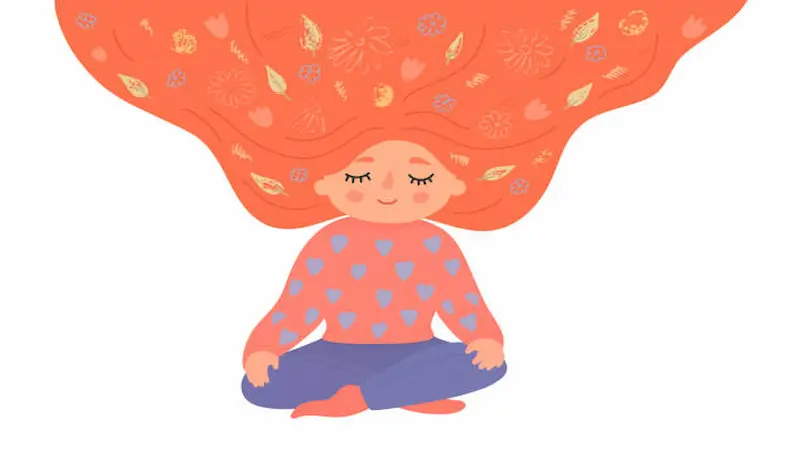
Benefits of Mindfulness for Kids
Practicing mindfulness can greatly enhance focus and concentration for children. By training their minds to stay present, they become better able to pay attention to their tasks, whether it’s studying, playing, or listening to a teacher.
Mindfulness offers a wide range of benefits for kids, including:
1. Enhancing Focus and Concentration: Mindfulness exercises help children improve their ability to concentrate and stay focused on tasks. By training their attention, kids become better equipped to ignore distractions and engage fully in their studies, hobbies, and daily activities.
2. Managing Stress and Anxiety: Mindfulness teaches children techniques to manage stress and anxiety effectively. By being aware of their thoughts and emotions without judgment, kids can develop a sense of calm and learn how to navigate stressful situations with greater ease.
3. Developing Emotional Resilience and Self-Regulation: Mindfulness cultivates emotional resilience by encouraging children to acknowledge and accept their feelings. It equips them with tools to regulate their emotions, enabling them to respond thoughtfully rather than reacting impulsively to challenging situations.
4. Improving Self-Awareness and Empathy: Mindfulness fosters self-awareness, helping kids develop a deeper understanding of their own thoughts, feelings, and actions. This increased self-awareness also extends to others, promoting empathy and compassion towards their peers and creating a more supportive and inclusive environment.
5. Enhancing Well-being and Happiness: Regular mindfulness practice has been shown to increase overall well-being and happiness in children. By developing a positive mindset and learning to appreciate the present moment, kids can experience a greater sense of contentment and satisfaction in their lives.
By incorporating mindfulness into their daily routines, children can benefit from these advantages and develop valuable life skills that will serve them well throughout their lives.

Mindful Breathing Exercises
Here are step-by-step instructions for kid-friendly breathing exercises and techniques to help children calm their minds and bodies:
1. Balloon Breathing:
– Find a comfortable sitting position or lie down.
– Imagine your belly is a balloon. Place your hands on your belly.
– Breathe in slowly through your nose, filling up your belly with air. Feel it expand like a balloon.
– Breathe out slowly through your mouth, deflating the balloon. Feel your belly go down.
– Repeat this breathing pattern, imagining the balloon filling up and deflating, for a few minutes.
2. Flower Breathing:
– Sit in a comfortable position and imagine holding a beautiful flower in your hand.
– Breathe in slowly through your nose, imagining you’re smelling the sweet fragrance of the flower.
– Breathe out gently through your mouth, as if you’re blowing away a tiny, delicate petal.
– Continue this breathing pattern, imagining the pleasant scent of the flower with each inhales and the gentle release of a petal with each exhale.
3. Bunny Breathing:
– Sit up straight and place your hands on your belly.
– Take a quick sniff through your nose like a bunny smelling a flower.
– Breathe out through your nose with a short, gentle puff, as if you’re gently blowing out a candle.
– Repeat the bunny sniff and puff for several breaths, focusing on the sensation of your breath.
4. Starfish Relaxation:
– Lie down comfortably on your back.
– Close your eyes and imagine being a starfish on a peaceful beach.
– Start with your right arm. Slowly wiggle your fingers and then let them relax, feeling the tension melt away.
– Move to your left arm, then your right leg, and finally your left leg, wiggling and relaxing each one.
– Take a deep breath and imagine the waves washing away any remaining tension in your body.
– Stay in this relaxed state for a few minutes, enjoying the calmness.
These techniques can be practiced for a few minutes each day or whenever children feel the need to calm their minds and bodies. Remember to encourage them to breathe gently and at their own pace. With consistent practice, these techniques can become valuable tools for children to find peace and relaxation in their daily lives.
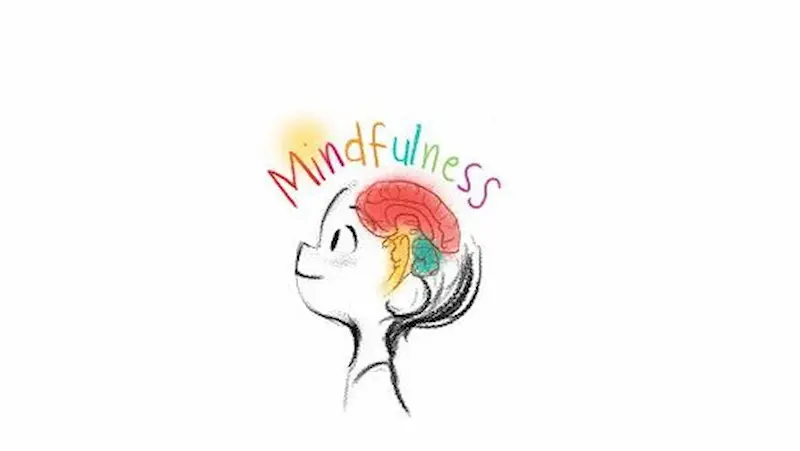
Mindful Listening Activities
Engaging exercises to improve listening skills and awareness:
1. Sound Hunt:
– Go outside or find a quiet space indoors.
– Close your eyes and listen carefully to the sounds around you.
– Try to identify different sounds, such as birds chirping, cars passing by, or people talking.
– See how many different sounds you can notice and try to describe them.
2. Musical Statues:
– Play some calming or lively music.
– Move and dance freely while the music is playing.
– When the music stops, freeze like a statue and listen attentively to the silence.
– Start the music again and continue the game, alternating between dancing and freezing.
3. Listening Walk:
– Take a walk in a natural setting like a park or forest.
– Focus on the sounds of nature, such as birds singing, leaves rustling, or water flowing.
– Try to identify and appreciate the different sounds you encounter during your walk.

Incorporating nature sounds and music for mindfulness practice:
1. Nature Sound Meditation:
– Find a quiet place where you can sit comfortably.
– Play recordings of nature sounds like birdsong, ocean waves, or rainforest ambiance.
– Close your eyes and focus on the sounds, allowing them to transport you to a peaceful natural setting.
– Pay attention to the details of the sounds, their rhythms, and how they make you feel.
2. Musical Mindfulness:
– Choose calming instrumental music or nature-inspired melodies.
– Sit or lie down in a comfortable position.
– Close your eyes and focus on the music, allowing it to fill your senses.
– Notice the different instruments, melodies, and rhythms, and let the music guide your thoughts and emotions. Mindfulness breathing for kids is a simple and effective practice to help them stay present and calm.
3. Guided Visualization with Nature Sounds:
– Play nature sounds like a babbling brook, gentle rain, or forest ambiance.
– Sit comfortably and close your eyes.
– Listen to the sounds and imagine yourself in that natural environment.
– Visualize the surroundings, the colors, the smells, and the sensations, creating a vivid mental experience.
By incorporating nature sounds and music into mindfulness practice, children can deepen their sense of connection with the world around them and enhance their overall mindfulness experience. It adds an element of serenity and helps create a calm and peaceful atmosphere for their mindfulness practice.
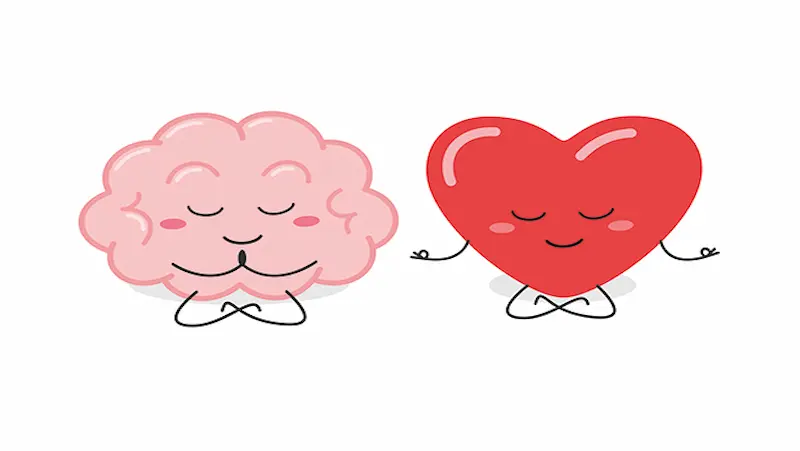
Mindful Body Awareness
Encouraging children to connect with their bodies through movement:
1. Body Scan:
– Have your child lie down comfortably.
– Starting from their toes, guide them to slowly tense and then relax each muscle group in their body, moving up to their head.
– Encourage them to pay attention to the physical sensations in each area and notice any differences between tension and relaxation.
2. Animal Movements:
– Assign different animal movements to specific body parts. For example, hop like a bunny, crawl like a crab, or stretch like a cat.
– Encourage your child to embody the movements and notice how their body feels while imitating each animal.
3. Mirror Movements:
– Stand facing your child and demonstrate simple movements like stretching your arms, touching your toes, or doing gentle twists.
– Have your child mirror your movements, encouraging them to pay attention to their body’s sensations and range of motion.
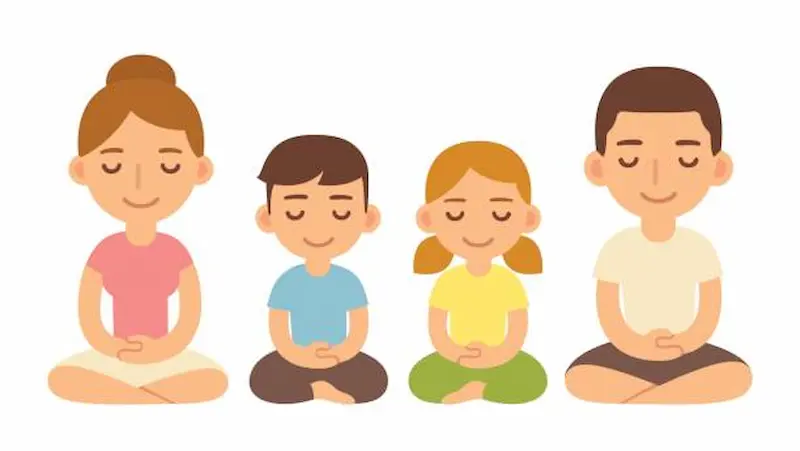
Yoga poses and stretches for mindfulness and relaxation:
1. Child’s Pose:
– Kneel on the floor, sit back on your heels, and lower your forehead to the ground.
– Extend your arms forward or rest them alongside your body.
– Take slow, deep breaths, allowing your body to relax and sink into the pose.
2. Tree Pose:
– Stand tall with your feet together.
– Lift one foot and place the sole against your inner thigh or calf (avoid the knee).
– Find your balance and bring your hands together at your heart center.
– Take deep breaths and focus on a point in front of you to help with balance.
3. Cat-Cow Stretch:
– Begin on your hands and knees, with your wrists under your shoulders and knees under your hips.
– Inhale and arch your back, lifting your head and tailbone (Cow Pose).
– Exhale and round your back, tucking your chin and tailbone (Cat Pose).
– Flow between these poses, syncing your movements with your breath.
4. Butterfly Pose:
– Sit on the floor and bring the soles of your feet together.
– Hold your feet or ankles with your hands.
– Gently flap your legs up and down, resembling butterfly wings.
– Take slow, deep breaths and allow your hips to open and relax.
Encouraging children to engage in mindful movement through yoga poses and stretches helps them connect with their bodies, improve flexibility, and promote relaxation. These activities provide an opportunity for children to focus on their breath, sensations, and body awareness, fostering a sense of mindfulness and self-care.
Mindfulness meditation for kids is a wonderful practice to help them develop focus and emotional awareness.

Practicing Gratitude and Kindness
Teaching children the importance of gratitude and empathy is a wonderful way to foster a grateful and compassionate mindset. Here are some creative activities to help cultivate these qualities:
1. Gratitude Journal:
– Encourage your child to keep a gratitude journal.
– Each day, have them write or draw three things they are grateful for.
– This activity helps them focus on positive aspects of their lives and develop a habit of gratitude.
2. Acts of Kindness:
– Encourage your child to perform acts of kindness for others.
– Help them brainstorm ideas, such as writing a thank-you note, helping with chores, or making a small gift for a friend or family member.
– Engaging in kind acts fosters empathy and compassion, teaching children to appreciate and care for others.
3. Sharing Circles:
– Gather as a family or with a group of friends.
– Create a safe space for everyone to share something they are grateful for or an act of kindness they witnessed or received.
– This activity encourages open communication, empathy, and appreciation for the positive experiences of others.

4. Gratitude Collage:
– Provide your child with magazines, scissors, glue, and a poster board or paper.
– Have them cut out images and words that represent things they are grateful for or that inspire feelings of empathy.
– Help them arrange and glue the cut-outs onto the poster board, creating a visual reminder of gratitude and compassion.
5. Storytelling:
– Encourage your child to create stories that highlight acts of kindness and gratitude.
– They can write or illustrate a storybook showcasing characters who demonstrate empathy and appreciation.
– This activity nurtures imagination, empathy, and the understanding of positive values.
6. Volunteering:
– Look for volunteer opportunities suitable for children in your community.
– Engage your child in age-appropriate volunteer activities, such as helping at a local shelter, participating in a food drive, or cleaning up a park.
These creative activities provide hands-on experiences for children to develop a grateful and compassionate mindset. By engaging in these practices, children learn to appreciate the positive aspects of their lives, understand and empathize with others’ experiences, and cultivate kindness and gratitude as integral parts of their daily lives.

Mindfulness in Everyday Life
Applying mindfulness to daily routines and activities can significantly enhance our experiences and promote a sense of presence and well-being. Here are some examples of how to incorporate mindfulness into everyday actions:
1. Mindful Eating:
– Before starting a meal, take a moment to appreciate the food in front of you.
– Notice the colors, smells, and textures of the food.
– Take small bites and chew slowly, savoring the flavors and being fully present with each bite.
– Pay attention to the sensations in your body as you eat and the feelings of nourishment and satisfaction.
2. Mindful Walking:
– During a walk, bring your attention to the physical sensations of walking.
– Notice how your feet feel as they touch the ground, the movement of your body, and the surrounding environment.
– Observe the sights, sounds, and smells around you without judgment, allowing yourself to fully immerse in the present moment.
3. Mindful Communication:
– When engaging in a conversation, be fully present and attentive to the person speaking.
– Listen actively, without interrupting or formulating responses in your mind.
– Notice the speaker’s words, tone, and body language, and try to understand their perspective.
– Respond mindfully, choosing your words consciously and with kindness.
4. Mindful Showering:
– As you step into the shower, focus on the sensation of the water on your skin.
– Notice the temperature, the flow, and the sound of the water.
– Feel the gentle touch of your hands as you cleanse your body and the relaxation that comes with each breath.
5. Mindful Cleaning:
– When engaging in household chores, bring your attention to the task at hand.
– Notice the physical sensations as you clean, such as the movement of your body and the textures you encounter.
– Appreciate the transformation that occurs as you tidy and create a clean environment.
Remember, mindfulness is about being fully present at the moment, cultivating awareness, and embracing non-judgmental acceptance. By incorporating mindfulness into daily routines and activities, we can transform mundane tasks into opportunities for greater connection, joy, and inner peace.
Check out mindfulness quotes for kids.

Overcoming Challenges and Resistance
When teaching mindfulness to kids, it’s common to encounter some difficulties, but there are strategies you can use to engage reluctant children and maintain their interest. Here are some tips:
1. Keep it Fun and Interactive:
– Make mindfulness activities enjoyable by incorporating games, movement, or creative elements.
– Use props, such as breathing buddies (stuffed animals), mindfulness jars, or coloring materials, to make the practice engaging and interactive.
2. Short and Age-Appropriate Activities:
– Start with brief mindfulness exercises, especially for younger children, and gradually increase the duration as their interest and ability to focus improves.
– Choose activities that are suitable for their age and developmental stage to maintain their engagement.
3. Incorporate Themes and Imagination:
– Introduce mindfulness through themes that resonate with children, such as nature, animals, or superheroes.
– Encourage imagination by using guided visualizations or storytelling to make the practice more captivating and relatable.
4. Be a Role Model:
– Practice mindfulness yourself and let children observe their own calm and present state.
– Children are more likely to engage in mindfulness when they see the positive impact it has on the adults around them.
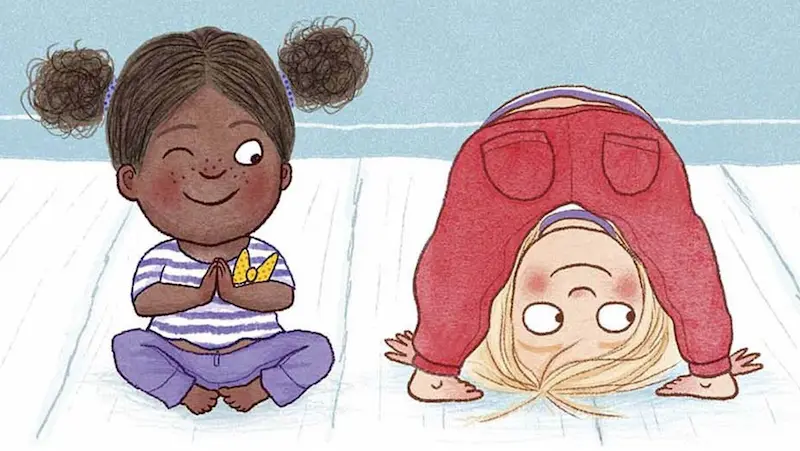
5. Use Variety and Flexibility:
– Offer a variety of mindfulness exercises, including breathing techniques, body scans, guided meditations, or mindful movements.
– Allow children to choose activities they enjoy and feel comfortable with, empowering them to take ownership of their mindfulness practice.
6. Connect Mindfulness to Their Interests:
– Relate mindfulness to something your child is interested in, such as sports, art, or nature.
– Highlight how mindfulness can enhance their performance, creativity, or enjoyment in activities they love.
7. Create a Supportive Environment:
– Set a calm and peaceful atmosphere during mindfulness practice, free from distractions and interruptions.
– Use soft lighting, comfortable seating, or soothing background music to create a conducive environment.
8. Offer Positive Reinforcement and Encouragement:
– Acknowledge and praise children’s efforts in practicing mindfulness.
– Highlight the benefits they experience, such as feeling calmer, more focused, or better able to manage emotions.
Remember that each child is unique, and their engagement with mindfulness may vary. Patience, flexibility, and adaptability are key when teaching mindfulness to kids. By making the practice enjoyable, relatable, and age-appropriate, you can help reluctant children develop an interest and maintain their engagement in mindfulness.

Cultivating a Mindful Environment
Creating a supportive and mindful atmosphere at home and school involves involving parents and caregivers in mindfulness practices. Here’s how you can encourage their participation:
1. Parent Workshops or Information Sessions:
– Organize workshops or information sessions to educate parents and caregivers about the benefits of mindfulness for children.
– Provide them with an overview of mindfulness practices and how they can support their child’s mindfulness journey.
2. Mindfulness Programs for Families:
– Offer mindfulness programs or classes specifically designed for families.
– Create a welcoming and inclusive environment where parents and children can learn and practice mindfulness together.
3. Take-Home Materials and Resources:
– Provide parents and caregivers with take-home materials, such as handouts, guides, or recommended books on mindfulness for children.
– Share digital resources, apps, or websites that offer mindfulness exercises and guided meditations suitable for both parents and children.
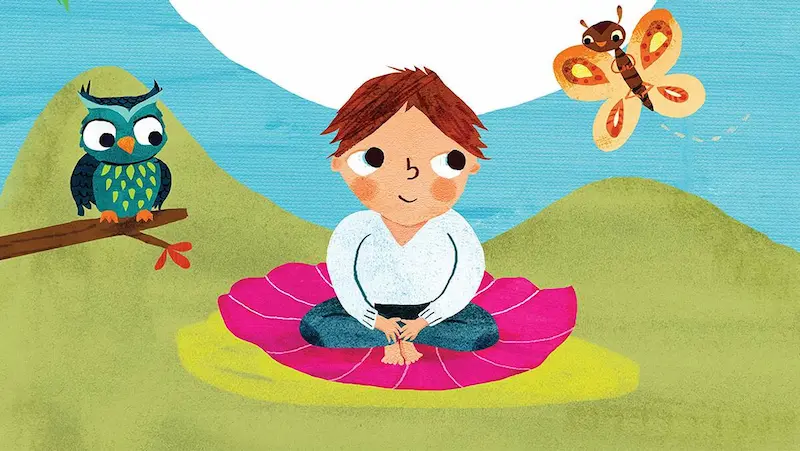
4. Mindful Parenting Groups:
– Establish mindful parenting groups where parents can connect, share experiences, and learn from each other.
– Facilitate discussions on incorporating mindfulness into parenting practices and navigating challenges mindfully.
5. Communication and Support:
– Maintain open lines of communication with parents and caregivers, providing ongoing support and encouragement.
– Share regular updates on mindfulness activities, resources, and the progress of their children.
6. Collaborate with Teachers and Schools:
– Work closely with teachers and schools to align mindfulness practices between home and educational settings.
– Provide consistent messaging and reinforce mindfulness principles across both environments.
By involving parents and caregivers in mindfulness practices, you create a supportive and consistent environment that reinforces mindfulness principles both at home and at school. Engaging parents in the process allows them to model mindfulness for their children, fosters a sense of shared understanding, and strengthens the integration of mindfulness into daily family life.

Mindfulness Resources for Kids and Parents
Recommended books, apps, and websites for further exploration:
1. Books:
Exploring mindfulness books for kids can help kids develop important skills for emotional awareness and focus.
– “Sitting Still Like a Frog: Mindfulness Exercises for Kids (and Their Parents)” by Eline Snel
– “Mindful Monkey, Happy Panda” by Lauren Alderfer
– “A Handful of Quiet: Happiness in Four Pebbles” by Thich Nhat Hanh
– “The Mindful Child: How to Help Your Kid Manage Stress and Become Happier, Kinder, and More Compassionate” by Susan Kaiser Greenland
2. Apps:
– Headspace for Kids: Provides guided meditations and mindfulness exercises designed specifically for children.
– Calm Kids: Offers breathing exercises, sleep stories, and mindful activities for kids of different ages.
– Smiling Mind: Features age-specific mindfulness programs for children and adults, including school-based programs.
3. Websites:
– Mindful.org: Provides articles, resources, and guided practices on mindfulness for both adults and children.
– GoZen: Offers online programs and resources for children, including mindfulness activities and tools for managing anxiety and stress.
– Mindful Schools: Provides mindfulness programs and training for educators, parents, and children, promoting mindfulness in educational settings.
These resources offer opportunities for further exploration and engagement in mindfulness as a family. They provide tools, guidance, and support to deepen mindfulness practice and promote well-being for both children and parents. Visit mindfulness coloring pages for kids.
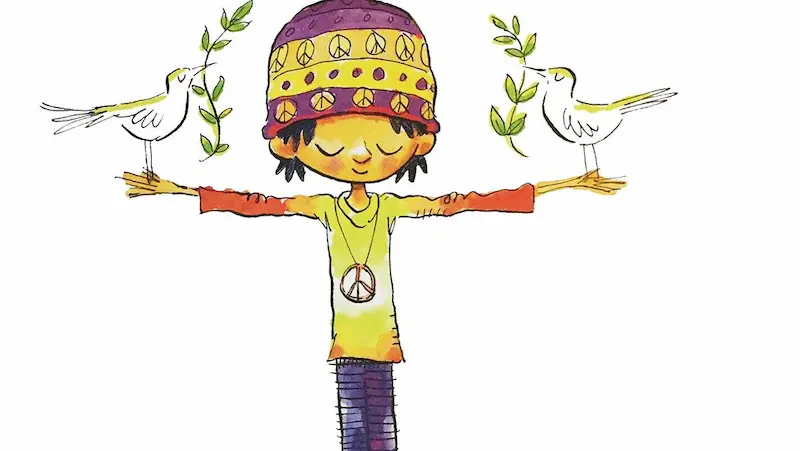
Conclusion
In conclusion, introducing children to the art of mindfulness is a valuable gift that can positively impact their well-being and development. By teaching them to be present, aware, and compassionate, we equip them with essential life skills.
Engaging in mindfulness exercises, incorporating nature sounds, practicing yoga, and fostering gratitude and empathy all contribute to their growth. Involving parents and caregivers, exploring recommended books, apps, and websites, and participating in online mindfulness programs as a family further strengthen the mindful atmosphere at home and school.
Let us embrace the power of mindfulness and guide our children toward a more centered and balanced way of being. Also, BrightChamps provides a comprehensive platform for learning about money for kids, offering interactive and engaging resources that teach financial literacy, budgeting, saving, and other essential money management skills.
Learn more about ways for kids to make money and financial literacy for kids follow us.
Frequently Asked Questions
Mindfulness is the practice of being present and aware of the present moment. It is important for kids as it helps enhance focus, manage stress, and develop emotional resilience and self-regulation.
Mindfulness can benefit children’s overall well-being and mental health by improving focus, reducing stress and anxiety, promoting emotional regulation, fostering self-awareness, and enhancing resilience and positive coping skills.
Children as young as preschool age can begin practicing mindfulness. However, the specific age may vary for each child. It is important to adapt mindfulness activities to their developmental level and engage them in age-appropriate practices.
Some simple mindfulness exercises suitable for kids include belly breathing, sensory awareness activities, guided visualizations, body scans, mindful coloring, and mindful walking or movement exercises.
You can introduce mindfulness to your child in a fun and engaging way by using games, and props like mindfulness jars or breathing buddies, incorporating storytelling or imaginative activities, and practicing mindfulness together.
Potential challenges in teaching mindfulness to kids include short attention spans and resistance. Overcome them by keeping activities brief and engaging, using creative approaches, being a role model, and offering a supportive and non-judgmental environment.
Yes, mindfulness can be beneficial for children with attention deficit disorders or hyperactivity. It can help improve their focus, attention span, and self-regulation, and reduce impulsive behaviors through increased self-awareness and emotional control.
Yes, scientific research has shown that mindfulness can benefit children by improving attention, reducing anxiety and stress, promoting emotional well-being, enhancing self-regulation, and improving cognitive functions such as working memory.
Parents and teachers can incorporate mindfulness into daily routines or educational settings by integrating short mindfulness activities, incorporating mindful moments during transitions, implementing mindfulness breaks, and modeling mindful behaviors themselves.
Mindfulness supports children’s emotional regulation and self-control by increasing their awareness of emotions, teaching them to observe without judgment, providing tools to respond calmly, and promoting a pause before reacting impulsively.

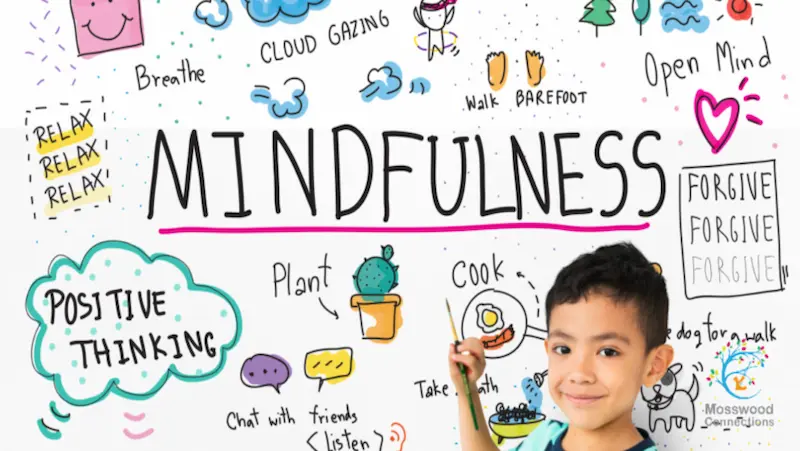
 We are an army of educators and passionate learners from BrightChamps family, committed to providing free learning resources to kids, parents & students.
We are an army of educators and passionate learners from BrightChamps family, committed to providing free learning resources to kids, parents & students.







